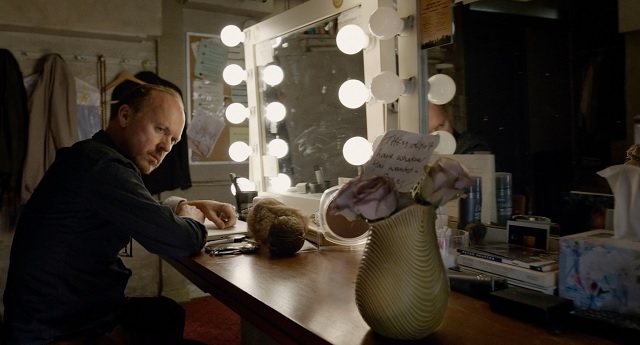“Birdman” takes viewers on a thrill ride
December 4, 2014
Alejandro Gonzalez Inarritu’s “Birdman” is a crowning achievement in story and film-making, similar to Richard Linklater’s “Boyhood” released earlier this year. It is notable the two have one crucial thing in common: a major theme is the effect of age on one’s life and how others perceive them.
“Birdman” follows 60-something play actor Riggan Thomson in his attempts to remain relevant with modern audiences after playing a superhero character decades prior. With a synopsis like this, one may guess the events of the film take place over a long time-span, but in fact the movie only shows a couple of days in Thomson’s life.
If all reviews of “Birdman” must discuss one thing, it is the camerawork. Director Inarritu chose Emmanuel Lubezki – whose work includes “Children of Men,” “The Tree of Life” and “Gravity” – for cinematography. Because of this, the film is visually ambitious; it is shot with nearly no cuts. One shot, spanning a character’s power-walk through two blocks of Times Square, lasts a couple of minutes. Another shot, segueing between a dressing room, the stage of a play and a New York bar, possibly lasts an entire half-hour. One shot, panning down, features a time lapse from the dead of night to sunrise.
Entertainment value is boosted by continuous shots; the cinematic innovation is interesting to watch, and a variety of techniques, including the zoom, pan and tracking shot, are employed. The film’s length, 119 minutes, leaves little time for things to drag.
The plot is also compelling. “Birdman” has an unconventional story relative to other recent Hollywood films; the distinctive cinematography hints at complex, subtle themes. In one scene, a play is being held while Sam, Riggan’s daughter, and Mike, a fellow actor, are on the rafters’ floor above the stage. The two characters embrace; after that, the shot pans upward above them, then slowly cranes all the way down to the stage on which the play is being held. Of course this is beautiful camerawork on its own, but it is also metaphorical. As a father and his daughter, Riggan and Sam are connected yet separated by the gap between two different generations. Likewise, the shot moves seamlessly from an upper floor to the previous, providing a bridge between two levels while showing their apartness from one another. This shot supported my theory regarding the film’s meaning, which is that a crucial theme is separation: Inarritu (also a co-writer) uses the distance between a play and its audience to symbolize the split between the older generation and the newer generation Riggan is trying to win the popularity of.
There is another example of this: when Riggan is stage left, preparing for the next scene, he sees Mike and Sam. Riggan’s face is seen in close-up while Sam and Mike are shown from a distance. Inarritu’s innovative direction (opposites between Riggan and his daughter, such as up vs. down or close-up vs. far away) conveys the generational gap. Also, perhaps the unbroken shots represent the connection between Riggan’s real life and his character’s actions.
“Birdman” takes liberties with humor. It is often absurdist, but still works because it doesn’t take itself too seriously. A fair amount of drama is combined with the comedy, but Inarritu’s tonal choices save this from making it uneven. A jazzy score – almost something of a drumroll or marching band – plays in several backstage scenes, and the film retains a quirky, comedic tone. Sometimes the score plays into the most dramatic scenes. When alone in his dressing room, Riggan hears the voice of the titular character he used to play taunting his old age; this element recurs throughout the film and nearly drives Riggan insane. These scenes, however, are comedic with the soundtrack.
Once jazz drumrolls get old, Inarritu showcases additional musical tricks. In a surrealist latter-half scene, Riggan tries to prove his relevance to Birdman and begins to fly, with the voice’s help, above the bustle of a New York City afternoon, past taxi cabs turning on the roads below, into and through a car tunnel…and all of it is set to Rachmaninoff’s “Symphony No. 2.” This is no surprise, since “Birdman” bends genres and breaks conventions from the beginning. Its plot is engrossing and thought-provoking. Its form of filmmaking is adventurous, incorporating an eclectic musical score and ambitious camerawork. Last, but not least, it is the greatest film I have seen this year. Grade: A


